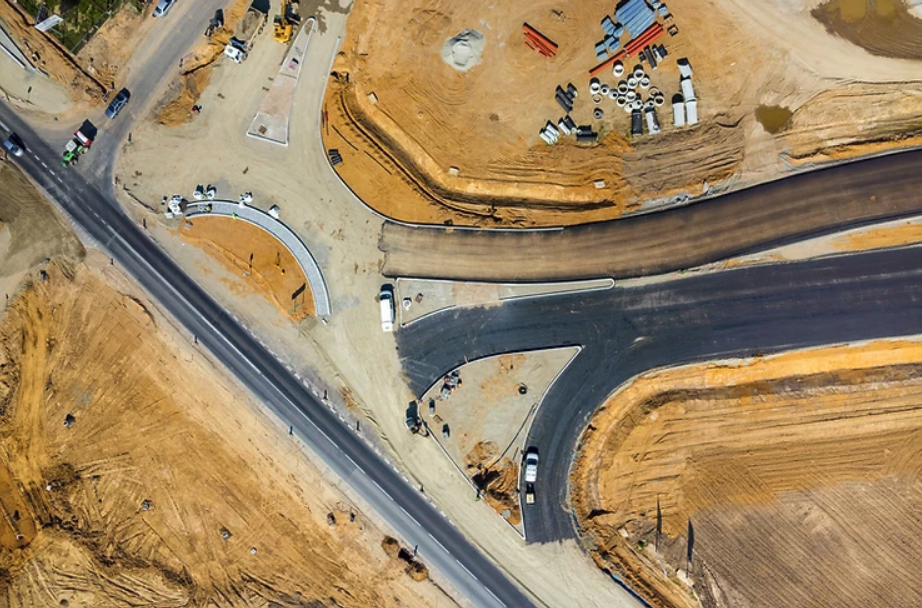Location, location, location!
Finding a site, dealing with any potential site acquisition issues or problems with the land, and embarking on the legal processes involved - well, it can seem a little daunting. We've consulted with property development experts to ensure you've got the guidance you need to undergo this process.
Key things to consider when looking for sites
Identifying sites is one of the most important parts of the development process. In fact, you can transform your potential for profit by being selective about which sites you purchase. Below we have broken down a few key areas to consider which can impact costs and time, which in turn have an effect on the residual site value (how much you should pay for the site).
Rights of way and access to the site
First and foremost, you need to ensure you can get to and from the site, and that the way is clear for any trucks, diggers, and other heavy machinery. If access is dependent upon a right of way, you also need to ensure that the eventual occupants (whether they're tenants in a block of units, or homeowners on their respective plots) have ease of access. Just because an existing plot has right of way and easy access, does not mean that it will be sufficient for whatever you're intending to build.
Roads
Depending on the size of the development you may need to enter into an agreement with the local council. They'll want to be assured that the roads meet their standards with a view to eventually taking responsibility for them when future maintenance is needed. The usual practice is for a bank to provide a bond that guarantees any corrective works will be covered in the event that your company goes into liquidation.
Sewers, drainage, and flooding
These are generally dealt with in much the same way as the roads - you will need to make sure the relevant local authorities will take over maintenance of the sewers after construction is complete. During construction, consider the route of the sewers on any individual plots as this may require additional rights to be put in all the transfer deeds. You need to ensure adequate drainage, as well as make sure the land is not on a flood plain or in any way contaminated due to pollution or poor drainage.
Preservation and conservation
Conservation orders can stop a development in its tracks. Check that the land, the trees, the waterways and any local wildlife are not affected. Check with your local government authorities - many have a searchable database online where you can check quickly and easily. In many cases, you may only need to make a minor adjustment to the layout of a development in order to accommodate conservation orders, but it's something you need to plan for very early on.
Boundaries
Be unmistakably clear in where your boundaries are, giving special consideration to the neighbouring properties. It can be stressful living next to a building site, and it's not uncommon for complaints to arise, especially around the issue of boundaries. Some developers have been more successful in meeting the neighbours face-to-face to talk about the development, with particular care and attention regarding expected timings, noise, and boundaries. If you can agree on where the boundaries are before even buying the land, you can avoid future problems - raising them with the seller first, and using any disagreements about the boundaries as a negotiation point.
Planning consent
When dealing with local government, decisions often have to go before a committee. This can take some time, and it can be useful to get along to some meetings - not just to push your own agenda, but to better understand what goes on at these meetings, how decisions are made, and what sorts of conversations are had about the needs of the community. The more informed you are about the community you're dealing with, the better placed you will be to ensure your development meets their expectations and is ultimately successful.
Survey
You will need to instruct a surveyor to come out and value the site, as well as advise on any particular areas about which you are concerned. Make it clear to the surveyor that you are intending to develop the site, and the number of plots you are intending to build.
Insurance
You won't need a whole lot of insurance to begin with, but you'll need to consider insurance for the life of the site as it progresses, giving particular consideration to the lay of the land, the sites, and any unique features that may pose additional risks - such as steep inclines, areas prone to mud or erosion, gullies, rock formations, etc. You'll need insurance from before you start building, right up until the date the properties are sold. (We've covered this in a little more detail in our Cost Management article.)
Making Your Offer
Before you even get a solicitor involved, you send an offer letter to the existing owner - either directly from yourself, or from an agent who represents you.
The landowner or their agent will choose to either accept or reject your offer - and if they accept it, they'll draw up heads of terms and send them to you for agreement. You can put your solicitor's details on the heads of terms when you sign and return them. At this point, your solicitor gets involved.
Your solicitor will contact the seller's solicitors and ask for an information pack about the site, containing:
- a copy of the title deeds, including easements, rights of way, etc
- a copy of the proposed contract
- any other relevant property or land information
Sometimes it takes a while for the solicitors to get hold of all this information, so be patient. In addition, your solicitor will need to carry out local authority, water, and possibly even mining searches, which they sent to the relevant authorities as a list of questions. As for what your solicitor will ask the existing landowner - they'll follow up on many of the issues raised in part 1 of this series, such as boundaries and rights of way. (They may wish to wait until after they've got copies of the contract and deeds.)
Some of the key things your solicitor will be looking out for on the title deeds are things like restrictive covenants that may limit the number of properties that you can build on the land, rights of way across the land, and making sure that the seller genuinely owns the site they're trying to sell to you.
After they've gone through all the above documents with you, and explained any problems there may be with the property, you can decide if you're satisfied there are no major problems with going ahead - at which point you can sign the contract and give your solicitor the deposit. You are then ready to exchange contracts.
Exchange & Completion
Before committing you to the purchase, you should consider having your solicitor visit the site to check if there are any issues with the property that you may not have previously noticed or considered. The necessity of such a visit does depend on the size and complexity of your development, so use your own discretion. It's not unusual for contracts to be exchanged conditionally upon receipt of satisfactory planning consent, so if consent is refused or unreasonable conditions are imposed, you can withdraw from the transaction even though contracts have been exchanged.
Once the buyer and the seller are ready, a completion date will be agreed. Your solicitors exchange contracts - a direct swap between the contract signed by the seller and one signed by the buyer - and you pay your deposit. Once this is done the contract is binding and neither party can withdraw without incurring serious expense, unless the exchange was conditional upon something, such as satisfactory planning consent as mentioned above.
On the completion date, your solicitor will transfer the remainder of the purchase funds, and they'll receive the transfer document and the title deeds on your behalf. Then your solicitor has up to 28 days to arrange for any payment of stamp duty if appropriate. Within two months of the completion date they must also apply to register your ownership at the Land Registry.
Getting Ready to Develop
We've already covered the importance of ensuring rights of way, drainage, etc are all considered - so make sure you document this well, as you'll need these records when it's time to sell. Depending on your timelines, you'll sometimes find that the Section 38 agreement for roads and the Section 104 agreement for sewers aren't completed by the time you come to sell, and under those circumstances you might have to accept a retention by the buyer's solicitors. When this happens, they will often hold back a nominal amount until the agreement is executed by the council.
For further support and best practice guidelines, sign up for Aprao. You can start your free account with us today, and gain access to the Aprao Academy which is full of useful resources for you and your team!






Leave a comment